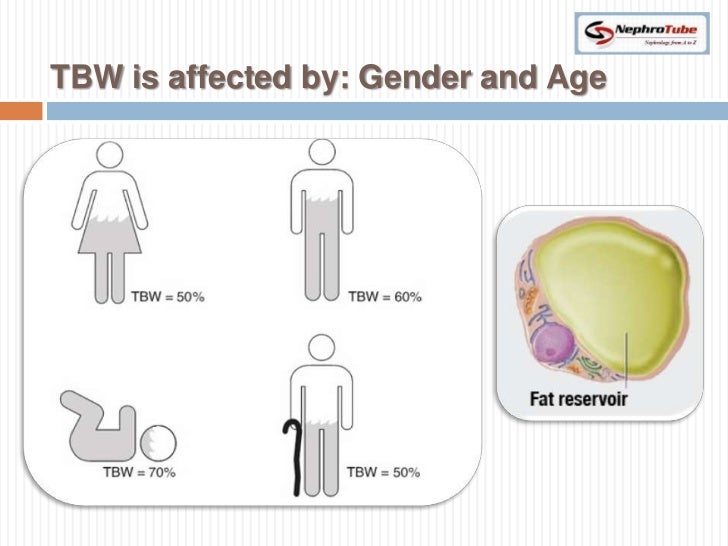
The Intracellular Fluid (ICF) refers to the fluid present inside cells and is considered the sum total of the fluid volume in all of the body's cells. The vascular wall is permeable to water and small solutes but not proteins. The plasma membrane is permeable to water but not small solutes or proteins. 
Each of these compartments is separated by the barriers shown above with unique physio-chemical properties. The ECF is itself divided between fluid within the vasculature itself, known as plasma, and that outside the vasculature, known as the interstitial fluid. The remainder is within the extracellular space as the Extracellular Fluid (ECF). Two-thirds of total body water is held within cells as Intracellular Fluid (ICF). Roughly 60% of the total body weight is water. Below we discuss how these compartments are defined, the nature of their separating barrier, and how much of the fluid volume each compartment contains in a healthy individual.

In a healthy individual, fluid is divided between these functional compartments in certain ratios.
#Physiology body fluid compartments free
Fluid within the body can be thought of as separated into several functional compartments divided by semi-permeable membranes which allow free movement of water but not of certain classes of solutes. The physical barrier between the intracellular fluid and interstitial fluid is the cell plasma membrane, and the physical barrier between the interstitial fluid and plasma is the capillary endothelium. These fluid compartments are emphasized by the gray background color. If we examine this figure carefully, and if we consider the functional interconnections of the fluid compartments, it becomes clear that there are three major fluid compartments: (1) intracellular fluid, (2) interstitial fluid, and (3) plasma. Transcellular fluid generally comprises up to about 2.5% of the total body water (or up to ~1 L). Cerebrospinal fluid (the fluid bathing the brain and the spinal cord), intraocular fluids (aqueous and vitreous humors), inner ear fluids (endolymph and perilymph), pericardial fluid, peritoneal fluid, synovial fluids (in joints), as well as some other fluids are components of the transcellular fluid in the body. This fluid is generally separated from the plasma by an additional epithelial layer in addition to the capillary endothelium. Transcellular fluid is found in small amounts in different body regions and, in total, comprises a very small portion (though not unimportant) of the total body water. It is generally about 75% of the volume of ECF (or ~10.5 L). Interstitial fluid is the fluid that directly bathes the cells and tissues in the body. The extravascular compartment is further subdivided into two compartments: interstitial fluid and transcellular fluid. The volume of plasma is about 3 L and is generally about 25% of the volume of ECF. Plasma is the fluid portion of blood (i.e., whole blood minus the so-called formed elements red cells, white cells, and platelets). The fluid in the intravascular compartment is the fluid that is present in all of body blood vessels. These two compartments are separated by the capillary endothelium (lining of the walls of the capillaries). The extracellular fluid (ECF) compartment is further subdivided into the intravascular compartment and the extravascular compartment. Approximately 33% of the total body fluid (or ~20% of total body weight) is in the extracellular fluid (ECF) compartment. The intracellular fluid is separated from the extracellular fluid by the cell plasma membrane. Therefore, the total volume of ICF is ~28 L (cytoplasmic volume of all cells combined). 
Approximately 67% of total body water (or ~40% of total body weight) is in the intracellular fluid (ICF) compartment, which is the fluid that is present in the cytoplasm of all cells of the body. If we use 70 kg (155 lb) to represent the average adult male, the total volume of water in the body can be calculated to be about 42 L. In a typical adult male human, approximately 60% of the total body weight is composed of water.







 0 kommentar(er)
0 kommentar(er)
